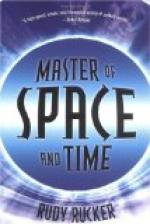Some manifestations of electricity had been known since long before the Christian era. A Greek legend relates how a shepherd named Magnes found that his crook was attracted by a strange rock. Thus was the lodestone, the natural magnetic iron ore, discovered, and the legend would lead us to believe that the words magnet and magnetism were derived from the name of the shepherd who chanced upon this natural magnet and the strange property of magnetism.
The ability of amber, when rubbed, to attract straws, was also known to the early peoples. How early this property was found, or how, we do not know. The name electricity is derived from elektron, the Greek name for amber.
The early Chinese and Persians knew of the lodestone, and of the magnetic properties of amber after it has been rubbed briskly. The Romans were familiar with these and other electrical effects. The Romans had discovered that the lodestone would attract iron, though a stone wall intervened. They were fond of mounting a bit of iron on a cork floating in a basin of water and watch it follow the lodestone held in the hand. It is related that the early magicians used it as a means of transmitting intelligence. If a needle were placed upon a bit of cork and the whole floated in a circular vessel with the alphabet inscribed about the circle, one outside the room could cause the needle to point toward any desired letters in turn by stepping to the proper position with the lodestone. Thus a message could be sent to the magician inside and various feats of magic performed. Our own modern magicians are reported as availing themselves of the more modern applications of electricity in somewhat similar fashion and using small, easily concealed wireless telegraph or telephone sets for communication with their confederates off the stage.
The idea of encircling a floating needle with the alphabet was developed into the sympathetic telegraph of the sixteenth century, which was based on a curious error. It was supposed that needles which had been touched by the same lodestone were sympathetic, and that if both were free to move one would imitate the movements of another, though they were at a distance. Thus, if one needle were attracted toward one letter after the other, and the second similarly mounted should follow its movements, a message might readily be spelled out. Of course the second needle would not follow the movements of the first, and so the sympathetic telegraph never worked, but much effort was expended upon it.
In the mean time others had learned that many substances besides amber, on being rubbed, possessed magnetic properties. Machines by which electricity could be produced in greater quantities by friction were produced and something was learned of conductors.
Benjamin Franklin sent aloft his historic kite and found that electricity came down the silken cord. He demonstrated that frictional and atmospheric electricity are the same. Franklin and others sent the electric charge along a wire, but it did not occur to them to endeavor to apply this to sending messages.




